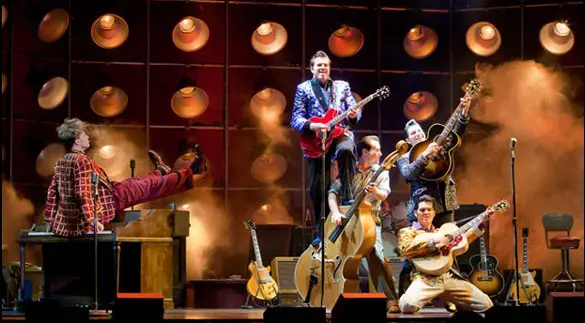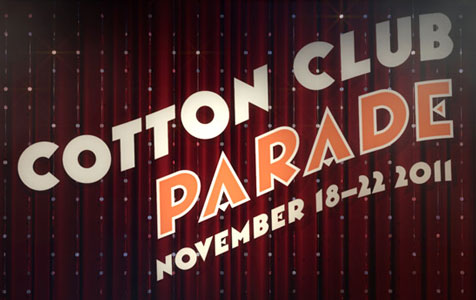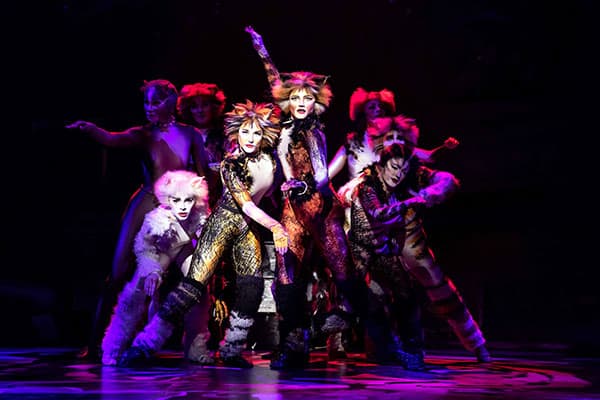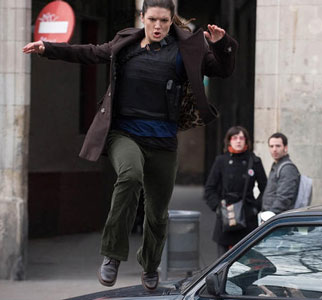“I just met a wonderful new man. He’s fictional but you can’t have everything.” – Cecilia, The Purple Rose of Cairo
Many indie theater companies, for better or worse, cling to a particular style after a few seasons (that is, if they even last that long) either by repeating shows or sticking with popular “name” plays in order to keep doing what the company does best. While there’s nothing wrong with playing to one’s strengths, people who thrive on creativity know that nothing sustains them better than a challenge. Now in its fourth season, New York City’s The Seeing Place has constantly demonstrated that what it offers is versatility in its productions, but the only thing that never changes is the quality of the performance and the value of the ticket prices.
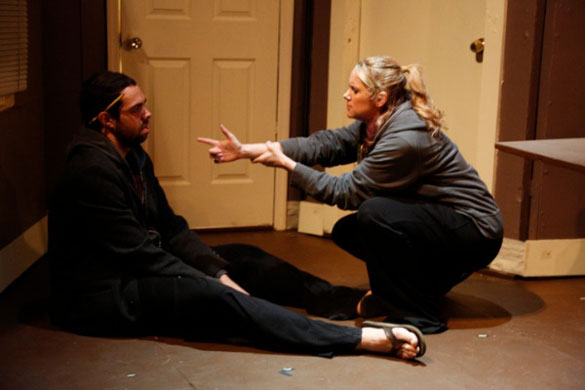
Starting this season for The Seeing Place is Love Song, a play by John Kolvenbach which did not get much of an initial run here in the United States but was more successful across the pond, earning an Olivier nomination. Joan (Marnie Klar), who is wound about as tightly as humanely possible, and her husband Harry (Jason Wilson) live on the Upper East Side and the play begins with Joan complaining to her husband about her incompetent intern who she just fired. They are visited by Joan’s brother, Beane (Brandon Walker), who is largely ignored despite his sullen face and dour disposition. When they do speak with him, it’s not unlike speaking to an unfocused child. Beane suffers from obvious emotional issues, to the point where his own apartment is empty besides from the bare necessities — he refuses to keep anything with even the most remote sentimental attachment (“I don’t want to have a fork if it’s gonna lie to me”). Though both Harry and Joan recommend that Beane seek professional help (albeit Joan does so reluctantly), his problems seem to begin to solve themselves when he meets Molly (Erin Cronican), a whirlwind of a woman who he finds trying to burglarize his apartment. Of course, being that Molly is dressed exactly like Beane, talks about herself in disturbing metaphors, and mysteriously appears in his apartment when he most needs her shows that there’s obviously more to the story here. As such, the play is less about these two couples than it is about Joan coming to terms with her brother’s issues.
Aside from July’s repertory productions of The Lover and Danny and the Deep Blue Sea (which featured only Cronican and Walker), one of the best aspects of attending performances by The Seeing Place is being introduced to wonderful New York City stage talent who had previously escaped my radar. Though Cronican and Walker are the heart of The Seeing Place (they are also the Managing Director and the Founding Artistic Director, respectively, and Cronican also directed this production), the two are wise to have chosen a play this time that brings talent of equal ability to their stage with equal stage time. Klar is tall and rail-thin, which adds to the body language of the type of high-strung individual who goes from morning coffee to evening cocktails with the self-imposed weight of the world on her shoulders. Klar has appeared on stage in New York for several years, and somehow finds a way to standout in a cast of standouts. Also making his Seeing Place debut is Wilson. Though his character is a bit subdued in earlier scenes, after the intermission he steps into a lead role as the frantic voice of reason that Joan doesn’t want to listen to — even if he does a wonderful job trying to teach her how to relax.
One of the play’s funniest scenes is right after the intermission, when Harry convinces Joan to play hooky from work so they can spend a day off relaxing. Joan is so detached from the world of fantasy and leisure that just going about lying on the phone and spreading out on the couch are impossibilities. This scene is played in contrast with Beane and Molly, who also have a rather playful exchange as they relax together. It’s a vivid change for Beane as Walker takes him from the emotional depths of the first scene to this point, but that makes it all the more sadder for the audience. These two scenes show all four lead actors at their best, although Walker also has a hysterical exchange with Bill (Javan Nelson), a waiter who introduces Beane to the delicious wonders of a turkey sandwich.
The crew remains sharp as ever, though special notice needs to go to Zach Pizza, who handled lightning design, for some key effects with an on-stage lamp and how its brightness reveals Beane’s state of mind and Joe Arnow, who designed one of the company’s most complicated and professional-looking sets. The way in which Beane’s apartment quakes and shrinks based on his state of mind is something that might seem beyond the budget of an indie company, but Arnow has devised a relatively simple, but clever, method to make it happen.
There’s a lot of nuances that come through here, most of which you can’t find on the page a play’s written on. After seeing four performances from The Seeing Place I can assure you that you’re not going to find this level of talent at this price anywhere else in Manhattan. The perfect evidence of this is that I saw Love Song on Black Friday, and despite it being a popular night for bar hopping with old acquaintances the Sargent Theater was packed. In my review of The Lover and Danny and the Deep Blue Sea I speculated that it is inevitable that The Seeing Place will outgrow the venue. I’m happy to see that they’re proving me right.

